Introduction to Jungian Dream Interpretation: Exploring the Shadow through Symbols

Carl Jung, the renowned Swiss psychiatrist and psychoanalyst, believed that dreams serve as a bridge between the conscious and unconscious mind, offering valuable insights into an individual’s psyche. In Jungian psychology, the concept of the “shadow” represents the repressed, hidden, and often undesirable aspects of the self. These aspects are pushed into the unconscious because they are inconsistent with the persona, the face we present to the world. Dreams provide a unique opportunity to encounter and explore these shadow elements, as they often appear symbolically in the form of animals, objects, or archetypal figures.
Symbols of the Shadow in Dreams
Jung argued that the language of dreams is primarily symbolic, with each symbol carrying personal and collective meanings. The 50 symbols discussed in this article represent common manifestations of the shadow in dreams, each with its own unique interpretation and significance. From the dark forest and the haunted house to the enigmatic stranger and the shattered mirror, these symbols invite the dreamer to delve into the depths of their unconscious mind and confront the hidden aspects of their psyche.
Techniques for Dream Work
Dream Journaling:
Keeping a dream journal is a fundamental technique in Jungian dream work. By recording dreams immediately upon waking, the dreamer can capture the details and emotions of the dream experience, providing valuable material for analysis and interpretation.
Amplification:
This technique involves exploring the personal and collective meanings of dream symbols by examining their cultural, mythological, and historical contexts. By broadening the understanding of a symbol, the dreamer can gain deeper insights into its significance within their own psyche.
Active Imagination:
Developed by Jung, active imagination is a method of engaging with the unconscious through dialogue, art, or other creative expressions. In the context of dream work, the dreamer can use active imagination to interact with dream characters or explore dream landscapes, gaining a more profound understanding of their inner world.
Dream Sharing:
Discussing dreams with a therapist or within a dream group can provide new perspectives and insights. By sharing dreams in a safe and supportive environment, the dreamer can benefit from the collective wisdom and experiences of others.
Approaches Associated with Different Therapists or Analysts
Sigmund Freud: Freud, the father of psychoanalysis, viewed dreams as the “royal road to the unconscious.” He believed that dreams were a manifestation of repressed desires and conflicts, often with sexual undertones. While Freudian dream interpretation can offer insights into the dreamer’s personal history and relationships, it has been criticized for its emphasis on sexual symbolism and its tendency to overlook the spiritual and transpersonal aspects of dreams.
Carl Jung:
Jung’s approach to dream interpretation focuses on the symbolic and archetypal content of dreams. He believed that dreams compensate for the one-sidedness of the conscious mind, providing a balancing perspective. Jungian dream analysis aims to integrate the shadow and other unconscious elements into the conscious personality, promoting individuation and self-realization. However, some critics argue that Jungian interpretation can be overly subjective and reliant on the analyst’s own understanding of symbols and archetypes.
Fritz Perls:
Perls, the founder of Gestalt therapy, viewed dreams as projections of the self. In Gestalt dream work, the dreamer is encouraged to take on the roles of various dream characters and objects, engaging in dialogue and exploration. This approach can provide valuable insights into the dreamer’s internal conflicts and relationships, but it may not always address the deeper, archetypal dimensions of dreams.
Robert Bosnak:
Bosnak’s embodied imagination approach to dream work emphasizes the sensory and emotional experience of dreams. By re-entering the dream landscape and engaging with dream images through the body and senses, the dreamer can access new levels of meaning and healing. While this approach can be deeply transformative, it may require a skilled facilitator and a willingness to engage in intense emotional work.
When Dreams are More Active
Dreams can become more active during periods of significant life transitions, stress, or psychological growth. During these times, the unconscious mind may be working overtime to process and integrate new experiences and challenges. Repetitive dreams, in particular, often indicate that the dreamer is grappling with an unresolved issue or conflict that requires attention and resolution.
Repetitive dreams may feature similar themes, symbols, or scenarios, highlighting the persistence of a particular shadow element or psychological challenge. These dreams serve as a call to action, urging the dreamer to confront and integrate the repressed aspects of their psyche. By engaging in dream work and exploring the symbolic content of repetitive dreams, the individual can gain valuable insights and take steps towards personal growth and healing.
Dream Interpretation and Personal Mythology
Jungian dream interpretation is closely linked to the concept of personal mythology. Jung believed that each individual has a unique mythology that shapes their understanding of themselves and the world around them. Dreams, as manifestations of the unconscious mind, often draw upon the themes, symbols, and narratives of the dreamer’s personal mythology.
By exploring the recurring themes and symbols in their dreams, individuals can gain insights into their personal mythology and the underlying beliefs, values, and experiences that shape their sense of self. This self-knowledge can be a powerful tool for personal growth, as it allows the dreamer to identify and challenge limiting patterns and embrace new possibilities.
The Role of the Anima and Animus in Dreams
Jung identified the anima and animus as the unconscious feminine and masculine aspects of the psyche, respectively. These archetypes often appear in dreams as figures of the opposite sex, representing the dreamer’s undeveloped or repressed qualities.
Encounters with the anima or animus in dreams can provide valuable insights into the dreamer’s relationship with their own masculinity or femininity, as well as their attitudes towards the opposite sex. By integrating these unconscious elements, the dreamer can achieve greater psychological balance and wholeness.
Dreams and Synchronicity
Jung coined the term “synchronicity” to describe meaningful coincidences that seem to have no causal relationship but are connected by their symbolic or emotional significance. Dreams can sometimes provide the key to understanding synchronistic events in waking life.
For example, a dreamer may encounter a particular symbol or theme in a dream, only to have that same symbol or theme appear in their waking life in a meaningful way. By paying attention to these synchronicities and exploring their symbolic significance, the dreamer can gain deeper insights into their unconscious mind and the unfolding of their personal journey.
The Collective Unconscious and Archetypal Dreams
In addition to personal symbols and themes, dreams can also draw upon the collective unconscious, a shared repository of human experience and wisdom. Archetypal dreams, which feature universal symbols and motifs, can provide insights into the broader human condition and the challenges that all individuals face.
Some common archetypal dreams include the pursuit dream, the exam dream, and the teeth falling out dream. By understanding the universal significance of these dreams, individuals can gain a greater appreciation for the interconnectedness of human experience and the shared journey towards self-realization.
Dream Interpretation and Spiritual Growth
Jungian dream interpretation is not only a tool for psychological growth but also a path towards spiritual development. By exploring the symbolic language of dreams, individuals can connect with the deeper, transpersonal aspects of their being and develop a greater sense of meaning and purpose.
Dreams can serve as a bridge between the ego and the Self, the archetypal core of the personality that represents the individual’s highest potential. By engaging with the symbols and themes of their dreams, individuals can align themselves with their true nature and embark on a journey of spiritual awakening and transformation.
Common Dream Symbols
-
1. The Dark Forest
Example: A dream where the dreamer wanders into a dark, dense forest with no clear path out.
Interpretation: The dark forest represents the unknown and often feared aspects of the unconscious mind. It signifies the dreamer’s venture into hidden fears and unresolved issues.
Symbolism: The forest stands for the complexity and depth of the unconscious. The darkness symbolizes the hidden, repressed aspects of the psyche.
Significance: The dark forest signifies the beginning of the journey into shadow work. It challenges the dreamer to face their deepest fears and discover hidden parts of themselves for personal growth.
2. The Shadow Self
Example: A dream where the dreamer encounters a shadowy figure that mimics their every move.
Interpretation: The shadow self represents the repressed or denied aspects of the dreamer’s personality. It symbolizes the need to confront these darker parts to achieve psychological balance.
Symbolism: The shadow figure represents the unconscious parts of the self that are hidden from the conscious mind. It embodies repressed emotions and aspects of the personality that are not acknowledged.
Significance: The shadow self emphasizes the importance of recognizing and integrating these repressed aspects for personal development and healing.
3. The Haunted House
Example: A dream where the dreamer explores an old, abandoned house filled with ghostly apparitions.
Interpretation: The haunted house symbolizes unresolved past traumas and emotional ghosts. It signifies the need to address and confront these lingering issues for personal healing.
Symbolism: The house represents the self or the psyche, while the haunting signifies unresolved past issues and repressed fears.
Significance: The haunted house encourages the dreamer to explore and resolve past traumas, promoting emotional healing and growth.
4. The Mirror
Example: A dream where the dreamer looks into a mirror but sees a distorted or unfamiliar version of themselves.
Interpretation: The mirror represents self-reflection and the recognition of hidden aspects of the self. It signifies the process of seeing and accepting repressed parts of one’s personality.
Symbolism: The mirror symbolizes self-awareness and reflection, while the distortion represents the hidden, often uncomfortable truths about oneself.
Significance: The mirror signifies the need for introspection and self-acceptance in order to integrate shadow elements for personal growth.
5. The Storm
Example: A dream where the dreamer is caught in a fierce storm with lightning and thunder.
Interpretation: The storm symbolizes emotional turbulence and conflicts that arise from facing the shadow self. It represents the chaos and intensity of confronting repressed emotions.
Symbolism: The storm represents the upheaval and challenges associated with shadow work. Lightning and thunder symbolize sudden insights and emotional disturbances.
Significance: The storm signifies the emotional intensity of shadow work and the need for resilience in the face of psychological challenges.
6. The Labyrinth
Example: A dream where the dreamer is navigating a complex maze with no clear way out.
Interpretation: The labyrinth represents the intricate and challenging process of self-exploration and shadow work. It symbolizes the difficulties encountered in the journey toward self-understanding.
Symbolism: The labyrinth signifies the complexity of the unconscious mind and the often confusing path of personal growth.
Significance: The labyrinth highlights the perseverance required for shadow work and encourages the dreamer to persist through the challenges of self-exploration.
7. The Abyss
Example: A dream where the dreamer peers into a deep, dark chasm with no visible bottom.
Interpretation: The abyss represents the most profound and mysterious aspects of the unconscious mind. It signifies the daunting task of confronting the darkest elements of the self.
Symbolism: The abyss symbolizes the depths of the psyche and the potential for discovering hidden truths. Its darkness represents the fear and uncertainty of exploring the shadow.
Significance: The abyss encourages the dreamer to face their deepest fears and unresolved issues, offering the potential for significant personal growth.
8. The Enigmatic Stranger
Example: A dream where the dreamer meets a mysterious figure who offers cryptic advice or warnings.
Interpretation: The enigmatic stranger represents the unknown and hidden aspects of the self. It signifies the process of exploring these mysterious elements for self-discovery.
Symbolism: The stranger embodies the unknown aspects of the unconscious mind. Their mysterious nature represents repressed emotions and hidden facets of the psyche.
Significance: The enigmatic stranger encourages the dreamer to explore and understand these unknown parts of themselves for personal growth and self-awareness.
9. The Unseen Force
Example: A dream where the dreamer feels an invisible presence influencing their actions or decisions.
Interpretation: The unseen force represents the hidden influences of the unconscious mind on the dreamer’s life. It signifies the impact of repressed emotions and unconscious drives.
Symbolism: The force symbolizes the hidden, often unnoticed influences of the shadow self on the dreamer’s thoughts and behavior.
Significance: The unseen force highlights the importance of acknowledging and addressing repressed emotions and unconscious drives for personal development.
10. The Drowning
Example: A dream where the dreamer is submerged in water and struggles to stay afloat.
Interpretation: Drowning symbolizes the overwhelming nature of confronting repressed emotions and fears. It represents the emotional challenges and struggles associated with shadow work.
Symbolism: Water represents emotions and the unconscious mind, while drowning signifies being overwhelmed by repressed feelings and unresolved issues.
Significance: Drowning emphasizes the emotional intensity of shadow work and encourages the dreamer to face and work through their emotional struggles.
11. The Phantom
Example: A dream where the dreamer encounters a ghostly figure from their past.
Interpretation: The phantom represents unresolved past traumas and repressed emotions. It signifies the need to confront and resolve these issues for personal healing.
Symbolism: The phantom symbolizes past traumas and the lingering effects of repressed emotions on the dreamer’s present life.
Significance: The phantom serves as a reminder to address past wounds and work towards personal healing and emotional resolution.
12. The Hyena
Example: A dream where the dreamer is surrounded by laughing, menacing hyenas.
Interpretation: The hyena symbolizes fears of judgment and ridicule from others. It represents societal pressures and the need for self-acceptance in the face of these challenges.
Symbolism: The hyena represents fear of being judged or laughed at, highlighting the influence of external pressures on the dreamer’s self-perception.
Significance: The hyena encourages the dreamer to confront their fears of judgment and work towards self-acceptance and personal growth.
13. The Graveyard
Example: A dream where the dreamer walks through a somber, deserted graveyard.
Interpretation: The graveyard symbolizes the need to confront and resolve past issues and repressed emotions. It signifies the process of revisiting and dealing with these shadow aspects.
Symbolism: The graveyard represents the past and the emotional burdens that need to be addressed for personal healing.
Significance: The graveyard emphasizes the importance of facing past traumas and repressed emotions to achieve personal growth and healing.
14. The Bear
Example: A dream where the dreamer encounters a powerful, intimidating bear in a forest.
Interpretation: The bear represents the challenge of facing primal instincts and unresolved emotional issues. It signifies the potential for personal transformation through shadow work.
Symbolism: The bear symbolizes strength and primal instincts, as well as the emotional challenges that come with confronting the shadow self.
Significance: The bear encourages the dreamer to face their deepest fears and unresolved issues, highlighting the potential for growth through this process.
15. The Dog
Example: A dream where the dreamer is followed by a loyal but quiet dog.
Interpretation: The dog represents loyalty and the potential for positive transformation through shadow work. It signifies the importance of facing hidden aspects of the self with a sense of trust and support.
Symbolism: The dog symbolizes companionship and loyalty, offering support in the process of confronting and integrating the shadow self.
Significance: The dog emphasizes the value of facing the shadow self with a sense of trust and support, encouraging personal growth and transformation.
16. The Unseen Creature
Example: A dream where the dreamer hears noises but cannot see the source of the sound.
Interpretation: The unseen creature represents the hidden and often frightening aspects of the unconscious mind. It signifies the fear and challenge of confronting these shadow elements.
Symbolism: The unseen creature symbolizes repressed fears and the difficulties associated with facing the unknown aspects of the psyche.
Significance: The unseen creature encourages the dreamer to confront their fears and explore the hidden aspects of the self for personal growth.
17. The Cat
Example: A dream where the dreamer observes a solitary cat sitting quietly in a dark room.
Interpretation: The cat symbolizes the balance between independence and the need for self-reflection. It represents the process of exploring hidden aspects of the self and the potential for personal growth.
Symbolism: The cat signifies independence, self-reflection, and the exploration of hidden parts of the self.
Significance: The cat encourages the dreamer to balance independence with self-reflection, exploring hidden aspects of the self for personal growth.
18. The Giant
Example: A dream where the dreamer encounters a towering, intimidating giant in a dreamscape.
Interpretation: The giant represents overwhelming challenges and the need for courage in confronting shadow aspects. It signifies the enormity of the challenges faced during shadow work.
Symbolism: The giant symbolizes the large, often daunting obstacles encountered in the process of self-exploration and shadow work.
Significance: The giant highlights the need for courage and perseverance in facing the substantial challenges of shadow work.
19. The Phantom
Example: A dream where the dreamer is pursued by a ghostly figure from their past.
Interpretation: The phantom represents unresolved past traumas and the emotional impact of repressed experiences. It signifies the need to confront these issues for personal healing.
Symbolism: The phantom symbolizes past traumas and the lingering effects of repressed emotions on the dreamer’s present life.
Significance: The phantom emphasizes the importance of addressing past emotional issues to achieve personal healing and growth.
20. The Wolf
Example: A dream where the dreamer sees a wolf observing them from a distance in a moonlit forest.
Interpretation: The wolf represents the balance between instinct and consciousness in shadow work. It signifies the exploration of primal instincts and the potential for growth through this balance.
Symbolism: The wolf symbolizes instinct, awareness, and the integration of shadow aspects of the self.
Significance: The wolf encourages the dreamer to explore the balance between instinct and consciousness for personal growth and transformation.
21. The Rabbit
Example: A dream where the dreamer encounters a frightened rabbit hiding in a burrow.
Interpretation: The rabbit represents vulnerability and the need for self-acceptance. It signifies the exploration of hidden fears and the potential for personal growth through this exploration.
Symbolism: The rabbit symbolizes vulnerability, fear, and the process of exploring repressed aspects of the self.
Significance: The rabbit highlights the importance of self-acceptance and the exploration of hidden fears for personal growth.
22. The Spider
Example: A dream where the dreamer watches a spider weaving a complex web.
Interpretation: The spider represents the complexities of the unconscious mind and the interconnectedness of shadow aspects. It signifies the intricate web of the psyche and the process of exploring these connections.
Symbolism: The spider symbolizes the complexity of the unconscious mind and the interconnected nature of shadow aspects.
Significance: The spider encourages the dreamer to explore the complexities of their psyche and understand the interconnectedness of their shadow elements.
23. The Unseen Force
Example: A dream where the dreamer feels an invisible presence manipulating their actions.
Interpretation: The unseen force represents the hidden influences of the unconscious mind on the dreamer’s life. It signifies the impact of repressed emotions and unconscious drives.
Symbolism: The force symbolizes the hidden, often unnoticed influences of the shadow self on the dreamer’s thoughts and behavior.
Significance: The unseen force highlights the importance of acknowledging and addressing repressed emotions and unconscious drives for personal development.
24. The Owl
Example: A dream where the dreamer is visited by a wise-looking owl perched on a branch.
Interpretation: The owl represents wisdom and the ability to see hidden truths. It signifies the potential for insight and understanding in the process of shadow work.
Symbolism: The owl symbolizes wisdom, insight, and the ability to see beyond illusions to uncover hidden truths.
Significance: The owl encourages the dreamer to seek wisdom and understanding in their shadow work, promoting personal insight and growth.
-
25. The Crow
Example
A dream where a crow caws loudly and circles around the dreamer.
Interpretation
The crow in dreams often represents transformation and the exploration of dark aspects of the self. Its presence suggests that the dreamer may be on the brink of a significant personal change or that there are hidden elements of the psyche that need to be addressed.
Symbolism
The crow symbolizes the shadow’s potential for transformation and the exploration of darker aspects of the self. It is a creature associated with the mystical and the unknown.
Significance
The crow invites the dreamer to confront their inner darkness and use it as a source for personal growth. It symbolizes the potential for transformation through shadow work.
26. The Dark Cave
Example
A dream where the dreamer finds themselves at the entrance of a dark, foreboding cave.
Interpretation
The dark cave represents the unknown and unexplored parts of the self. It signifies the beginning of a journey into the unconscious mind to face hidden fears and unresolved issues.
Symbolism
The cave symbolizes the depths of the unconscious and the process of introspection. It represents the challenge of exploring and understanding the shadow self.
Significance
The dark cave encourages the dreamer to venture into their inner world and confront the repressed aspects of their psyche for personal growth and healing.
27. The Black Cat
Example
A dream where a black cat follows the dreamer but never allows them to get close.
Interpretation
The black cat often symbolizes mystery and the unknown. It suggests that there are hidden fears or repressed emotions that the dreamer needs to confront.
Symbolism
The black cat represents the enigmatic and often unsettling aspects of the shadow. It signifies the presence of hidden forces within the unconscious mind.
Significance
The black cat serves as a reminder to explore and understand the mysterious aspects of the self, encouraging the dreamer to face and integrate these elements.
28. The Abandoned Building
Example
A dream where the dreamer explores an old, dilapidated building filled with cobwebs and dust.
Interpretation
The abandoned building symbolizes neglected and repressed aspects of the psyche. It suggests that there are unresolved issues or past experiences that need to be addressed.
Symbolism
The building represents the inner self and the state of the psyche. Its abandoned and deteriorated state signifies forgotten or neglected emotional wounds.
Significance
The abandoned building urges the dreamer to revisit and confront past issues for the purpose of healing and personal development.
29. The Ghost
Example
A dream where a ghostly figure appears and seems to follow the dreamer around.
Interpretation
The ghost represents unresolved past traumas or repressed emotions. It signifies that there are lingering issues from the past that the dreamer needs to confront.
Symbolism
The ghost symbolizes unresolved conflicts and the shadows of past experiences. It represents the emotional burdens that have been left unaddressed.
Significance
The ghost encourages the dreamer to face and resolve past traumas for emotional healing and growth.
30. The Gnarled Tree
Example
A dream where the dreamer encounters a large, twisted tree with dark, heavy branches.
Interpretation
The gnarled tree symbolizes deep-seated emotional issues and the difficulty of confronting them. It represents the challenge of dealing with complex and repressed emotions.
Symbolism
The tree signifies the growth and development of the psyche, while its gnarled form represents the twisted and difficult aspects of the shadow self.
Significance
The gnarled tree highlights the need for perseverance in shadow work and encourages the dreamer to confront and work through their emotional challenges.
31. The Dark River
Example
A dream where the dreamer stands on the bank of a dark, turbulent river.
Interpretation
The dark river symbolizes the flow of unconscious emotions and the challenges of navigating these emotional currents. It represents the journey through the shadow aspects of the self.
Symbolism
The river signifies the passage of time and the movement of emotions. Its darkness represents the hidden and often troubling aspects of the unconscious.
Significance
The dark river invites the dreamer to explore and understand their emotional depths and encourages growth through this exploration.
32. The Hidden Door
Example
A dream where the dreamer discovers a hidden door in a familiar place.
Interpretation
The hidden door symbolizes access to unknown or repressed aspects of the psyche. It represents opportunities for exploring hidden emotions or aspects of the self.
Symbolism
The door signifies new opportunities for self-discovery and exploration of the unconscious mind. Its hidden nature represents the unknown aspects of the shadow self.
Significance
The hidden door encourages the dreamer to seek out and explore the hidden dimensions of their psyche for personal development and healing.
33. The Tornado
Example
A dream where a tornado approaches and the dreamer is caught in its powerful winds.
Interpretation
The tornado symbolizes overwhelming emotional forces and the chaos that can come from confronting the shadow self. It represents the turmoil of facing deep-seated fears and emotions.
Symbolism
The tornado signifies powerful, uncontrollable emotions and the potential for significant change. It represents the upheaval that can occur during shadow work.
Significance
The tornado serves as a metaphor for the emotional turbulence of shadow work and the potential for transformative change through confronting these challenges.
34. The Lost Object
Example
A dream where the dreamer searches for a lost object that is crucial but never found.
Interpretation
The lost object represents aspects of the self or unresolved issues that have been neglected or forgotten. It symbolizes the search for missing elements of the psyche.
Symbolism
The object signifies important but repressed aspects of the self. Its loss represents the challenges of retrieving and understanding these hidden parts.
Significance
The lost object highlights the need for introspection and the effort required to uncover and address neglected emotional or psychological issues.
35. The Mysterious Note
Example
A dream where the dreamer finds a cryptic note with an unknown message.
Interpretation
The mysterious note symbolizes hidden messages from the unconscious mind. It represents the potential for discovering repressed thoughts or emotions.
Symbolism
The note signifies communication from the unconscious and the hidden aspects of the psyche. Its cryptic nature represents the need for interpretation and understanding.
Significance
The mysterious note invites the dreamer to decode and explore hidden messages from their unconscious for personal insight and growth.
36. The Stormy Sea
Example
A dream where the dreamer is adrift on a stormy sea, struggling against the waves.
Interpretation
The stormy sea represents emotional chaos and the struggle of confronting repressed feelings. It symbolizes the difficulties of navigating through shadow work.
Symbolism
The sea signifies the vast, deep unconscious mind, while the storm represents emotional turbulence and conflict. It reflects the challenges of facing one’s inner darkness.
Significance
The stormy sea emphasizes the emotional struggle of shadow work and the potential for growth through enduring and overcoming these difficulties.
37. The Mask
Example
A dream where the dreamer is wearing a mask that conceals their true face.
Interpretation
The mask represents the persona or false self that hides the true emotions and shadow aspects of the psyche. It signifies the need for authenticity and self-exploration.
Symbolism
The mask symbolizes the façade people present to the world and the hidden aspects of the self that are concealed behind this façade.
Significance
The mask encourages the dreamer to look beyond their persona and confront the repressed aspects of their shadow self for personal growth.
38. The Barren Desert
Example
A dream where the dreamer wanders alone in a vast, empty desert.
Interpretation
The barren desert symbolizes isolation and the emptiness of unresolved emotional issues. It represents the loneliness and desolation of facing the shadow self.
Symbolism
The desert signifies emotional barrenness and the stark reality of confronting repressed feelings. It reflects the solitude of inner exploration.
Significance
The barren desert highlights the solitary nature of shadow work and the introspective journey required for personal healing.
39. The Cryptic Symbol
Example
A dream where the dreamer encounters an enigmatic symbol with an unknown meaning.
Interpretation
The cryptic symbol represents hidden aspects of the self and the need for interpretation to uncover deeper truths. It signifies the complexity of the unconscious mind.
Symbolism
The symbol signifies the mysterious and often obscure elements of the shadow self. It represents the challenge of understanding these hidden aspects.
Significance
The cryptic symbol invites the dreamer to delve into their unconscious mind and explore the deeper meanings of their inner experiences.
40. The Shadowy Figure
Example
A dream where a shadowy figure follows the dreamer without revealing its face.
Interpretation
The shadowy figure represents the unknown and repressed parts of the self. It signifies the presence of hidden fears or unresolved issues.
Symbolism
The shadowy figure symbolizes the elusive and often frightening aspects of the shadow self. It reflects the challenge of confronting these unknown elements.
Significance
The shadowy figure urges the dreamer to face and understand the hidden fears and repressed emotions that are affecting their life. It represents the potential for growth through the recognition and integration of these shadow elements.
41. The Enchanted Forest
Example
A dream where the dreamer explores a mystical forest filled with strange creatures and hidden paths.
Interpretation
The enchanted forest symbolizes a journey into the depths of the unconscious mind. It represents the exploration of hidden aspects of the self and the mysteries of the psyche.
Symbolism
The forest signifies the complexity of the inner world and the unknown territories of the unconscious. Its magical quality represents the potential for discovery and transformation.
Significance
The enchanted forest encourages the dreamer to explore the hidden realms of their psyche and to embrace the unknown aspects of the self for personal growth.
42. The Twisted Path
Example
A dream where the dreamer walks along a winding, treacherous path through a dark landscape.
Interpretation
The twisted path represents the challenging and often confusing journey of shadow work. It symbolizes the difficulties and obstacles in exploring and understanding repressed emotions.
Symbolism
The path signifies the journey of self-exploration and the struggles encountered along the way. Its twisted nature reflects the complexity of the shadow self.
Significance
The twisted path highlights the perseverance required for shadow work and encourages the dreamer to navigate through their emotional and psychological challenges.
43. The Rusty Key
Example
A dream where the dreamer finds an old, rusty key in a forgotten drawer.
Interpretation
The rusty key symbolizes access to hidden or repressed aspects of the psyche. It represents the potential for unlocking unresolved issues or discovering forgotten parts of the self.
Symbolism
The key signifies access and discovery, while its rustiness represents neglected or forgotten elements of the shadow self.
Significance
The rusty key invites the dreamer to uncover and explore hidden parts of their psyche, emphasizing the importance of revisiting and addressing repressed emotions.
44. The Phantom Train
Example
A dream where the dreamer sees a ghostly train traveling through a foggy landscape.
Interpretation
The phantom train represents the past and the unresolved issues that continue to influence the present. It signifies the need to confront and resolve lingering emotional burdens.
Symbolism
The train symbolizes the passage of time and the journey of life, while the ghostly nature represents unresolved traumas and emotional ghosts from the past.
Significance
The phantom train encourages the dreamer to address past issues and to work through unresolved emotional challenges for personal healing.
45. The Ominous Sky
Example
A dream where the sky is filled with dark, menacing clouds and an impending storm.
Interpretation
The ominous sky symbolizes the looming presence of repressed fears and unresolved emotional conflicts. It represents the emotional intensity and potential for upheaval in the shadow work process.
Symbolism
The sky signifies the vast expanse of the unconscious mind, while the dark clouds represent hidden fears and the potential for emotional disturbance.
Significance
The ominous sky serves as a reminder of the emotional intensity of shadow work and the importance of preparing for and confronting these challenges.
46. The Forsaken Island
Example
A dream where the dreamer is stranded on a deserted, isolated island.
Interpretation
The forsaken island represents emotional isolation and the feeling of being cut off from one’s own repressed feelings and experiences. It signifies the solitude of confronting the shadow self.
Symbolism
The island signifies isolation and the separation from the unconscious mind. Its forsaken nature represents neglected or hidden aspects of the self.
Significance
The forsaken island highlights the solitary nature of shadow work and encourages the dreamer to explore and address their repressed emotions in solitude.
47. The Shattered Mirror
Example
A dream where the dreamer looks into a mirror only to see it crack and shatter.
Interpretation
The shattered mirror symbolizes the fragmentation of the self and the process of breaking down false personas. It represents the need to confront and integrate fragmented aspects of the shadow.
Symbolism
The mirror signifies self-reflection and identity, while its shattering represents the breaking down of illusions and the confrontation of repressed aspects of the self.
Significance
The shattered mirror encourages the dreamer to face the fragmented parts of their psyche and to work towards integrating these aspects for personal growth.
48. The Abandoned Carnival
Example
A dream where the dreamer wanders through an old, empty carnival with broken rides and faded colors.
Interpretation
The abandoned carnival symbolizes lost joy and the emotional emptiness of repressed feelings. It represents the decline of past experiences and the need to confront these forgotten aspects.
Symbolism
The carnival signifies joy and pleasure, while its abandonment represents the loss of these experiences and the neglected emotions associated with them.
Significance
The abandoned carnival serves as a metaphor for revisiting and addressing past emotional experiences, encouraging the dreamer to explore and heal from past wounds.
49. The Mysterious Library
Example
A dream where the dreamer finds themselves in a vast, ancient library filled with dusty, forgotten books.
Interpretation
The mysterious library represents the hidden knowledge and repressed memories within the unconscious mind. It signifies the potential for discovery and learning about oneself.
Symbolism
The library signifies knowledge and learning, while its mysterious and dusty nature represents the hidden and forgotten aspects of the self.
Significance
The mysterious library invites the dreamer to explore and uncover hidden knowledge and repressed memories for personal insight and growth.
50. The Vanishing Path
Example
A dream where the dreamer follows a path that gradually disappears into the fog.
Interpretation
The vanishing path symbolizes the elusive and unpredictable nature of shadow work. It represents the challenges of navigating through the unknown aspects of the self.
Symbolism
The path signifies the journey of self-exploration, while its vanishing nature represents the uncertainty and difficulties of confronting repressed emotions.
Significance
The vanishing path highlights the unpredictability of shadow work and encourages the dreamer to continue their journey despite the uncertainties and obstacles.










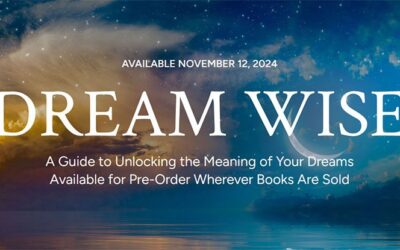
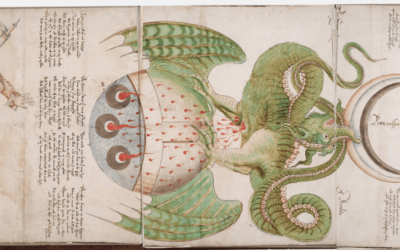



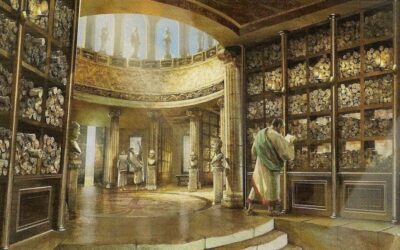



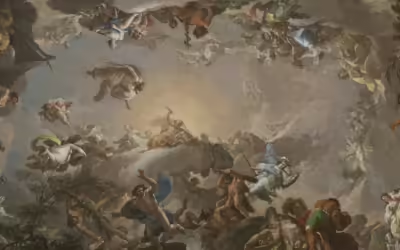
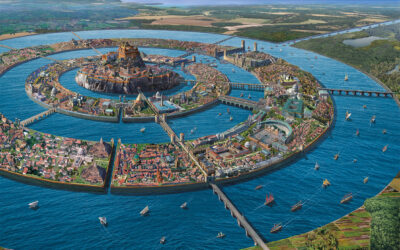

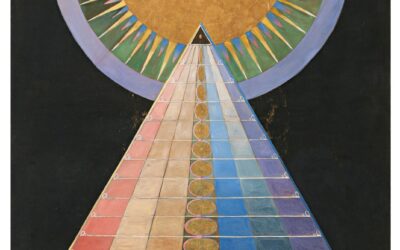
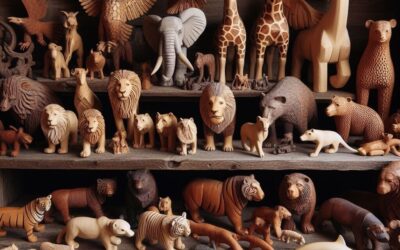

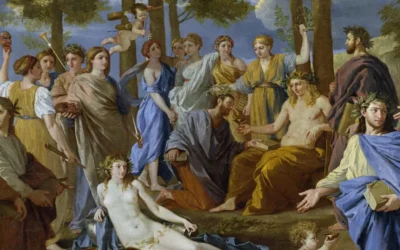
0 Comments